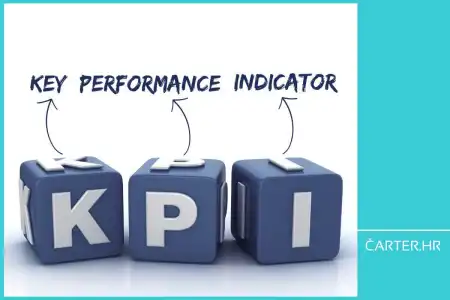
- 21.01.2025.
- News, Management
A new season, new challenges! This year, Andreja Fazlić focuses on strategy, digital transformation, and the psychology of change. Here are essential guidelines for leaders who want to stay ahead of the competition and ensure business growth. Strategy, people, and HubSpot can be the drivers of your business growth as well. How to apply them? Find out below.
Welcome to the fourth season of my column for čarter.hr!
I use the first article of the year to give a brief overview of what I will be writing about in the coming months. Last season, I dedicated my focus to digital transformation and the revenue flywheel, rounding it off with 5 key lessons.
If you are a leader who in 2025 wants to drive business growth through effective marketing and sales strategies that also involve technology, these lessons should interest you.
Below, I remind you of these 5 key lessons, and you can find the full article at this link:
- People should be more important than technology. As a leader, you bear the greatest responsibility for the success of your company's digital transformation. It is important that you lead by example, showing how to navigate change in a human and transparent way. Engage and educate your employees to ensure their active participation, and if you do not know how to do it yourself, seek a consultant who fits the needs of your team, project, and business.
- Customer focus is nothing new, but it is high time to implement it in your business. Focus on customer satisfaction and user experience. Learn to use data about your customers and their purchasing habits; analyze it, and use feedback to tailor your products and services to their real needs. Without this, there is no trust or loyalty today.
- Make it easier for your people to navigate change and help them maintain focus on goals and the new business direction by introducing agile working methods. Flexibility and speed are crucial ingredients for active and competitive market participation, but human nature is generally slow and resistant to sudden changes. Agile methods, simple structures, and clear communication make this transition less stressful and exhausting for your employees.
- Technology exists to serve people and should be chosen (and directed) towards achieving business goals. Not the other way around. Many digital transformation projects have failed precisely due to an excessive focus on trendy technology and the perception that a piece of software can make a big difference in business. Without strategy and people, it cannot.
- Let transparency be the foundation of your organizational culture. Keep in mind that transparency is not necessarily the same as honesty. Create an environment where mistakes are seen as opportunities for learning. We know that innovations stem from the freedom to try and fail. Encourage experimentation and creativity among your employees, give them space and support to test ideas, and ensure that failures are used as tools for future improvements. And include humor—it connects us more easily in situations we perceive as uncomfortable or awkward.
Through these five points, two main themes intertwine: strategy and people (read: psychology).

What I will write about in 2025
I have decided to focus on two main topics. I believe you can guess which ones, the topics of man and strategy. Neither changes very quickly and both have their own principles, but it is crucial for both to remain flexible.
People are the ones who drive and implement digital business transformation, and the same goes for customers – they ultimately determine the success or failure of our marketing and sales efforts. The common denominator in both contexts is strategy.
In the context of organizations, I will write about topics such as the psychology of change, leadership through transformation, and team management. I will strive to answer questions like how to motivate and engage teams, how to identify and develop essential digital skills for a competitive business.
When it comes to customers, I will write about what drives their purchasing decisions, how their buying habits have changed, how to predict their needs, how to build relationships, and how to foster loyalty.

The story is based on psychology - because people usually behave predictably.
By better understanding human psychology – how they behave during changes or while making purchases – we can develop strategies that meet their needs and align with our business goals.
Without a clear strategy, every goal remains just a fantasy.
In this context, I will write about different forms of strategies and their applications, primarily focusing on business strategies, digital transformation strategies, and marketing and sales strategies. The focus will be on practical guides for building stable business models that incorporate new technologies and appropriate marketing and sales tactics.
HubSpot is a great tool for growth
Of course, I will also touch on the topic of technology. HubSpot is already ubiquitous in my writing. I have been working with him for so long and have witnessed excellent stories of revenue growth and optimization of business processes that I consider him an indispensable element of business for all those who want to excel in business. I will write about how to use it through marketing, sales and customer support departments, and experiences from working with clients in the context of implementing and developing a CRM strategy.
If you are thinking about how to ensure competitiveness and revenue growth, I invite you to follow the topics that I will cover during the year.

The first next text to follow in the season will be a return to basics.
I will write about well-known and proven strategic business frameworks, about what is the difference between a business plan and a strategy, even what does a marketing or sales strategy have to do with a business strategy. As well as concrete steps that, through strategy, connect business goals, people and technology into a cohesive system.
Categories of trends
- News
- Sale
- Marketing
- SEO
- Web design
- Social media
- Technology
- Regulations
- Management
- Education
- Finances
- User experience
Newsletter
Sign up for the newsletter and receive the latest trends and tips straight to your inbox




